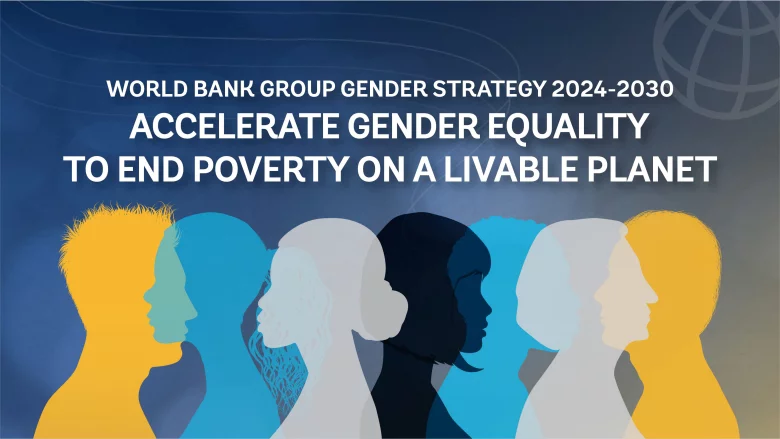
PTF’s Perspectives
July 9, 2024 – After an elaborate and comprehensive process of stakeholder consultations, the World Bank Group (WBG) has finalized its new Gender Strategy. Like other stakeholders, PTF made suggestions for changes to the WBG – this article examines the extent to which the Strategy responds to PTF’s concerns.
At the outset, it needs to be said that the Strategy is an excellent exposition of both the issues confronting gender equality in the world, and the myriad facets that need to be tackled in accelerating it. Drawing on the lessons learned from the implementation of its predecessor, which covered the period 2016-2023, the new Strategy seeks “greater ambition” to promote gender equality in all that the WBG does (as PTF had also recommended) and to “engage differently”. To these ends, it lays out the three Strategic Objectives:
- Eliminating Gender Based Violence [GBV] and Elevating Human Capital
- Expanding and Enabling Economic Opportunities
- Engaging Women as Leaders
The Strategy then proceeds to provide a conceptual framework that would underpin action towards these Strategic Objectives, and implementation guidelines for this purpose. All of this is well thought out and articulated, and does valuable service to the cause of gender equality and efforts to promote it. Part of the value of the WBG is its thought leadership in matters of development assistance and the intellectual guidance it offers to others who operate in the many components of that field.
That said, there are three broad criticisms that could be leveled at the Strategy. The first is that, despite the excellent exposition of the Strategic Objectives and conceptual framework, the Strategy inspires little confidence that it will, in fact, be implemented vigorously. This is because there is no indication of whether, or to what extent, its financing of operations to tackle gender inequalities will increase. Given the WBG’s relationship with its borrowing countries, this is understandable, since specific interventions – whether aimed at policies or operations – would only emerge from Country Partnership Frameworks negotiated with national governments. Nevertheless, the absence of even notional targets for grants/loans for gender operations means that the spur to achieving “greater ambition” on gender equality may be missing.
Second, the Strategy talks of working with other stakeholders, including civil society. However, it remains unclear how the WBG intends to involve NGOs and CSOs in efforts to implement the Strategy. One is left with the impression that, while lip-service is paid to the role of civil society, the Strategy does not meaningfully convey any sense of the real potential that NGOs/CSOs have to promote gender equality and fight GBV. There is also no indication whether the WBG would consider financing NGOs/CSOs to this end (as PTF had suggested). This is especially unfortunate since, in many LMICs, much of the action on gender equality lies at the community level.
Third, as already acknowledged, the Strategy does well in making the case for accelerating gender equality. It rightly links this issue to efforts to reduce poverty and action on sustainable development. What it fails to do, though, is contextualize gender inequality in the fight for good governance, including both improving effectiveness of public services and preventing corruption (which impacts women and girls disproportionately and differently). Similarly, while the Strategy acknowledges the importance of public safety (see below), it again |does not establish the link to good governance: if women and girls fear for their personal safety in public places, they cannot fully access the opportunities and benefits available to them. Ensuring such safety is, thus, a responsibility of Government and an integral aspect of good governance.
Scorecard on PTF’s Specific Comments on the draft Strategy
In some respects, the Strategy is responsive to PTF’s observations:
- The Strategy rightly gives prominence to the issue of GBV, which is also a particular focus for PTF.
- The need for safety in public transportation, public spaces and the workplace to prevent GBV has been acknowledged.
- In line with PTF’s request, the Strategy recognizes the importance of more research to close data gaps, and for data to be disaggregated by gender. It is hoped that all such data are publicly available and accessible.
- The emphasis on accountability at all levels of Strategy implementation is welcome and this would, ideally, privilege performance evaluations that highlight what works, in what circumstances, and what does not.
On the negative side:
- The impact of corruption on women, including “sextortion”, `to which PTF had drawn attention, is ignored for all practical purposes, meriting only a stray mention in para. 46. This is truly unfortunate.
- There are also no action plans for attaining the objectives and outcomes of the Strategy. Taken together with the lack of gender lending targets, this suggests that implementation may well be sub-optimal.
Conclusion
In sum, the Strategy admirably lays out the contours of the issues involved in accelerating gender equality, and the challenges in tackling them. It is less convincing in conveying commitment and determination to implementing it. Thus, while the diagnosis may be sound, the treatment is likely to be problematic.

